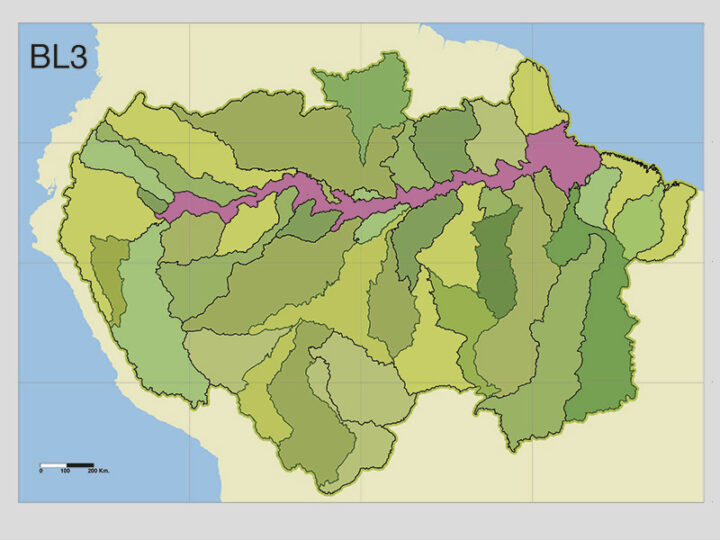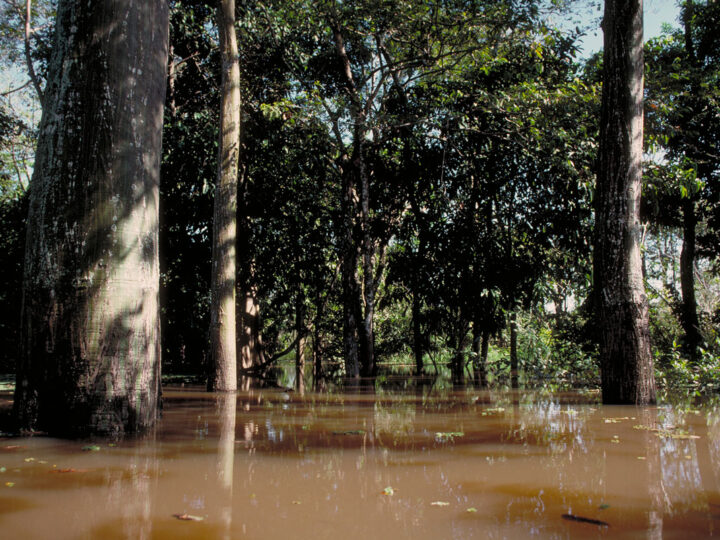
 Dialogue is an essential element for learning about the needs and expectations of the communities in the face of the processes carried out in their territories. Photo: Walter Wust.
Dialogue is an essential element for learning about the needs and expectations of the communities in the face of the processes carried out in their territories. Photo: Walter Wust.
Good faith is something that accompanies the actions of environmental organizations and professionals and, in general, of all organizations whose objective is the conservation of the environment, biodiversity and the improvement of the quality of life of the populations. Behind every initiative or project there will always be a great effort in terms of planning and design of interventions, research, management of economic and human resources, logistics and systematization of information. Good faith, however, is not a tool or a methodology for intervention: there are already structured resources of proven effectiveness that can help in this regard.
Over the last decades, environmental projects (which contemplate the conservation of biodiversity and the improvement of the quality of life of human populations) have been given special attention to promoting and facilitating that communities in those territories participate in all phases of their implementation. Projects always require a great effort in terms of planning and design of interventions, research, management of economic and human resources, logistics, and systematization of information, so integrating the efforts and voices of the different actors is a way of ensuring their positive contribution to local development. The combination of efforts and voices is referred to as dialogue of knowledge, a methodology in which organizations provide technical knowledge and communities provide practical and traditional knowledge about how they relate to and use their territories. This dialogue is a valid and very necessary tool for all types of work involving communities, but it is even more important when working with the indigenous, peasant, and Afro-descendant populations, since these groups usually have knowledge and ways of relating to a very specific territory, and the links with nature can become very strong and determine many local activities, including the forms of organization, division of work, and economic and productive activities.
The dialogue of knowledge is accomplished through open processes of active listening with all the actors involved. This listening should be carried out in all phases of the projects, even from the drawing-up to ensure that the ideas, objectives, and methodologies chosen are aligned with the needs, interests, and capacities of the local communities. Wanting to include the dialogue of knowledge only in some stages or after implementation can put the process’s success at risk.
 For many communities, the management and use of territory are linked to their ancestral traditions. Photo: Walter Wust.
For many communities, the management and use of territory are linked to their ancestral traditions. Photo: Walter Wust.
Rosario Gómez-S., a biologist and anthropologist with extensive experience on issues related to the use and conservation of biodiversity, talks about the challenges and setbacks based on her personal experience that can be created when the exchange of knowledge implied in the dialogue of knowledge is not incorporated in the primary phases of the projects: “I came to the Peña Roja indigenous community in the Colombian Amazon to work on a sustainable initiative of butterfly breeding, based on the care of eggs and larvae in captivity. By isolating them from natural enemies, the survival rate increases from 10% to even more than 80%, so at the end of the process between 10% and 15% of the butterflies that would normally have reached adulthood return to the environment, and the rest are marketed. The proposal consisted of taking advantage of the great biodiversity of the Amazon and the extensive knowledge that indigenous communities have about the cycles of nature in order to generate sustainable economic alternatives.”
This initiative has even been in other countries for decades, such as Papua New Guinea and Costa Rica, resulting in economic benefits for local communities in parallel with the conservation of species and their natural environment. “I showed my guides, who were community members, the drawings of caterpillars in the catalogs and they told me that they were worms, not butterflies, and that butterfly caterpillars did not exist. I talked to them about international markets, collectors, museums, butterfly farms, people who throw butterflies in weddings instead of rice, the dust from their wings used for microchips and computer screens, but nothing of the kind convinced them. It seemed nonsense to them that someone would want to buy butterflies.”
When investigating more about the history of the community, the researcher discovered that the ethnic group had suffered a drastic decrease in population and uprooting of the territory during the time of rubber extraction, a process during which much of the knowledge about the natural processes, ancestral cultural practices, and vital elements for the transmission of such knowledge such as language was lost, which explained that they did not know the natural process of the butterfly metamorphosis. Additionally, in the history and worldview of the community, worms (in general) were associated with diseases, and many of the butterfly species had some link with mystical or ritual issues, so the elders (the knowers) did not look at their marketing with good eyes. The younger generation, on their part, with a different conception of the territory, began to hunt adult butterflies to try to sell them; which, contrary to what happens with breeding, can put species at risk at the local level.
Lecciones aprendidas
 The concepts of economic growth and development from a Western vision of the world differ from the vision of the communities that have inhabited their territories for thousands of years. Photo: Walter Wust.
The concepts of economic growth and development from a Western vision of the world differ from the vision of the communities that have inhabited their territories for thousands of years. Photo: Walter Wust.
“The project did not work. Without taking into account the cultural aspects of the community and its vision of development, understanding their needs and interests, we could not speak of true sustainability,” says Rosario Gómez-S, “I hoped to lay the foundations for a project to generate economic resources in a community that did not want economic surpluses. When initiating a real dialogue with the community, I discovered that what they wanted was to increase the availability of the royal palm, a plant from which the salt that is used in the mixing of ritual tobacco is extracted and that it was increasingly difficult to find. They were also interested in arrau turtles, but had no interest in butterflies and worms.”
Based on this experience, and many others that have been widely documented in processes of territorial and community development, it is possible to affirm that identifying the interests of the community and understanding how, from their culture, they are related to the territory and biodiversity is fundamental and a priority. “Many times, it is more viable and sustainable to support processes that are already underway because they have been thought about and discussed by the community and those things have already raised their interest. It makes no sense to go to someone’s house to tell them that you are going to remodel it without the person asking for it,” says the researcher.
To work with local communities, it is necessary to document their worldview, traditional practices, and transformation over time, as well as research their needs in their daily lives. The vision of economic growth and development that emerged from a Western vision of the world differs, as in this case, from that vision of the peoples who have inhabited territories for thousands of years; that is why they speak of their territories. In this documentation, which also includes the first approaches with the communities, an attitude of listening rather than speaking is vital, and it is necessary to consider that the cultural, social, traditional knowledge and forms of community organization should be the starting point in any initiative. “We must work without forgetting that projects are not eternal; there are agreed-upon deadlines and commitments with donors, but certain processes such as restoration, for example, will only show results 15 years after their implementation. The institutions leave and the projects are finished, but the communities stay, that is why they cannot be treated as guests in their own territories,” says the researcher.
Written by Carolina Obregón Sánchez.



